

2023 ANNUAL CONFERENCE SPECIAL EDITION
Omni La Costa Resort & Spa, Carlsbad, California February 27 - March 1, 2023
The 2023 annual conference brought members of the pistachio community from near and far for an exciting 3 days of networking, education and community. Over 1,250 people traveled through the rain, sleet and storms to attend the conference.






are continuing into the current Crop Year.



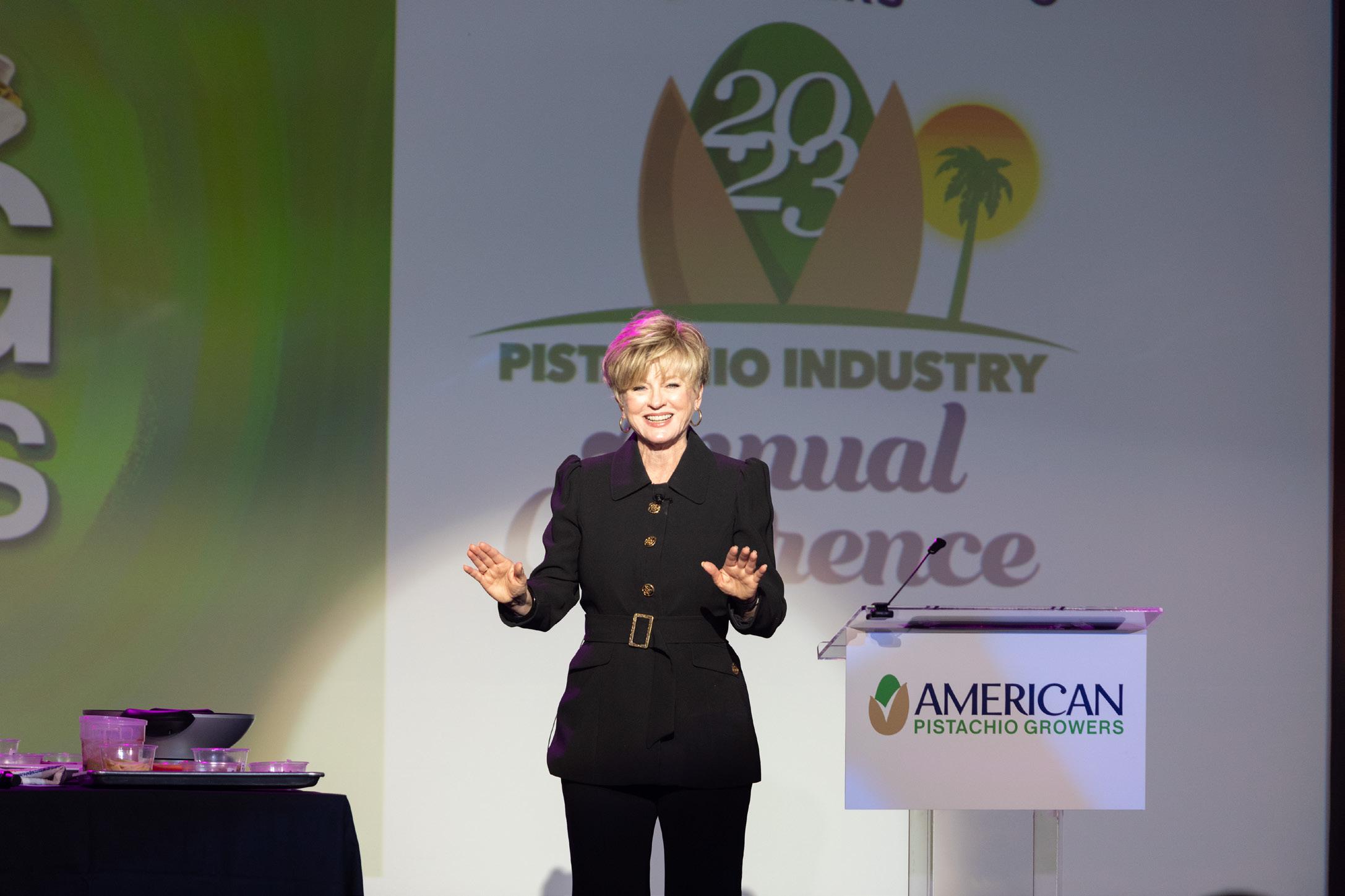


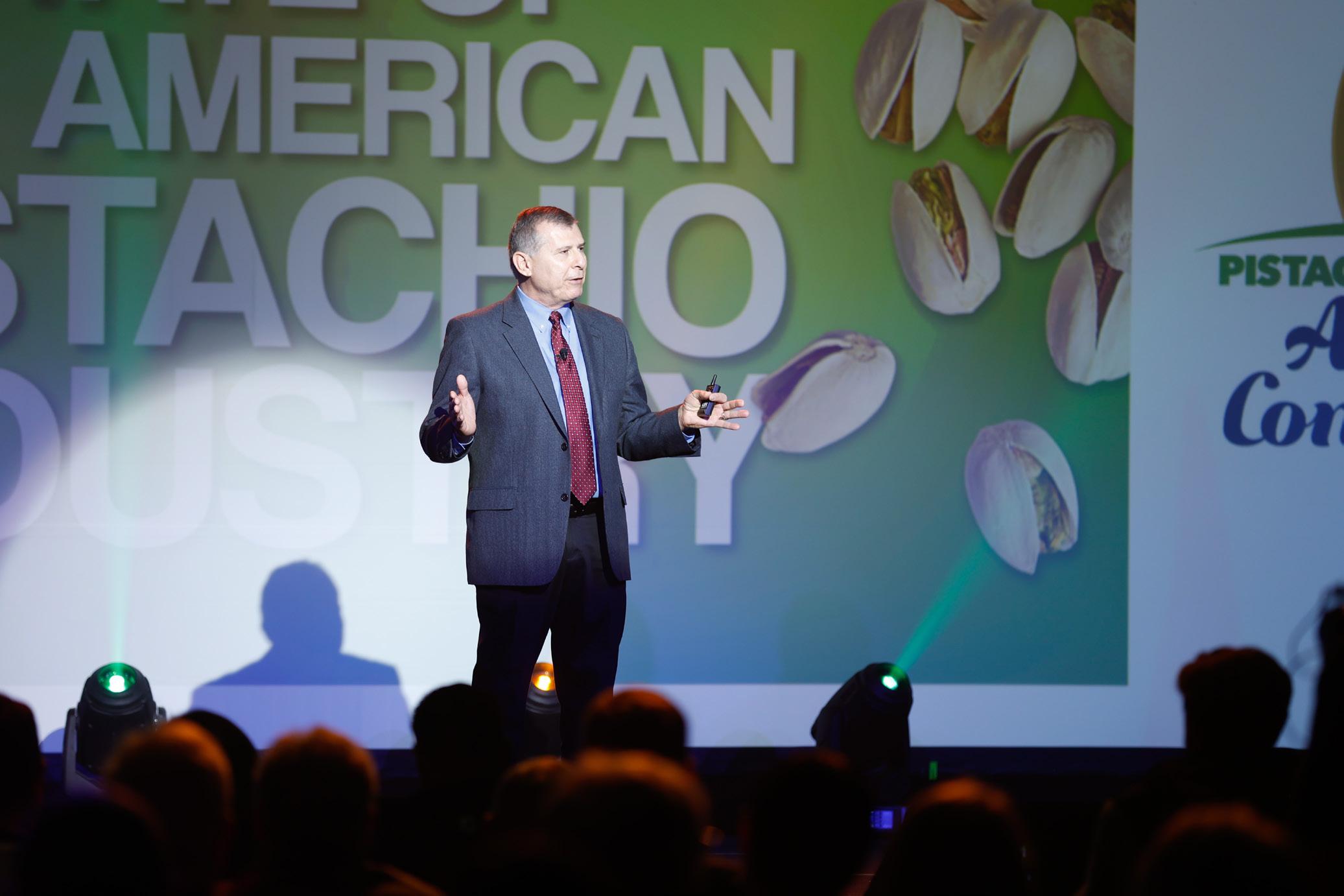

CADEE CONDIT

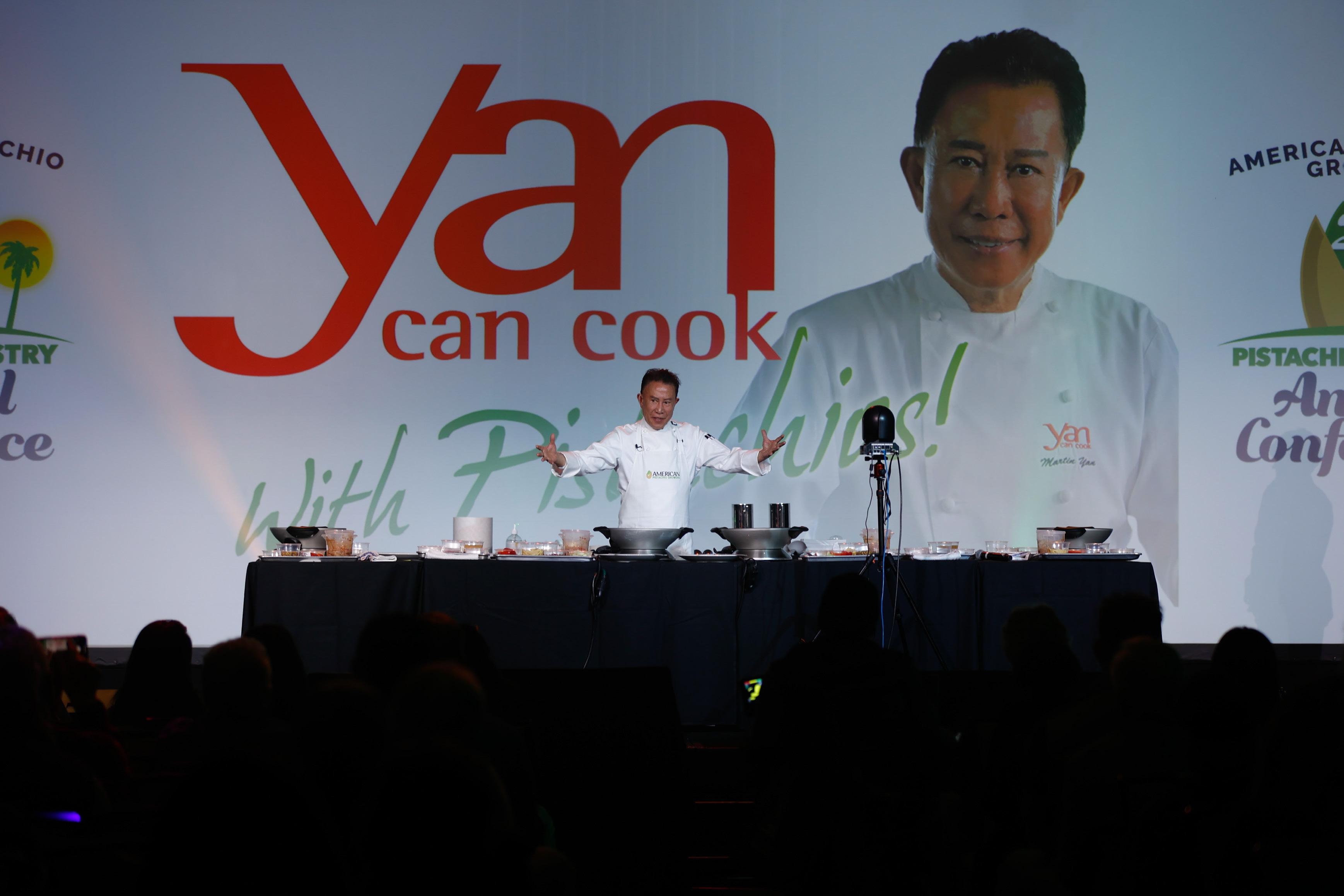



 Relations, and Judy Hirigoyen introduced a California legislative campaign designed to target California’s decision makers.
Judy Hirigoyen and APG Board Member, KARUN SAMRAN, announced a new ad hoc committee dedicated to sustainability.
Relations, and Judy Hirigoyen introduced a California legislative campaign designed to target California’s decision makers.
Judy Hirigoyen and APG Board Member, KARUN SAMRAN, announced a new ad hoc committee dedicated to sustainability.
The announcement that Martin Yan was joining APG’s team of ambassadors was celebrated with a cooking competition led by Chef Yan. APG growers Lorna Roush, Dean Graham and Drew Hoffman were challenged to make Martin Yan’s famous Kung





best flavor. It was a tie. The 3 growers received 2 tickets to an NFL game of their choice for the upcoming 2023 NFL season.
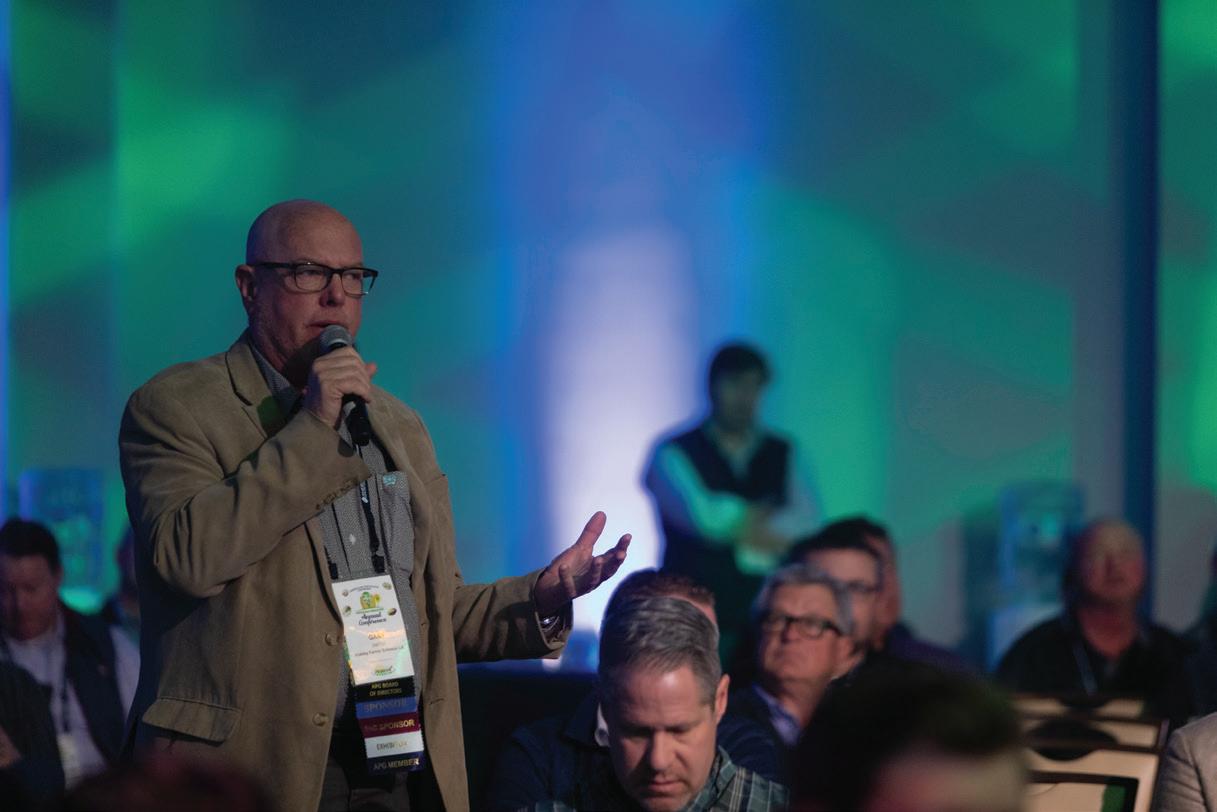
See Page 16 for Chef Martin Yan’s Recipes
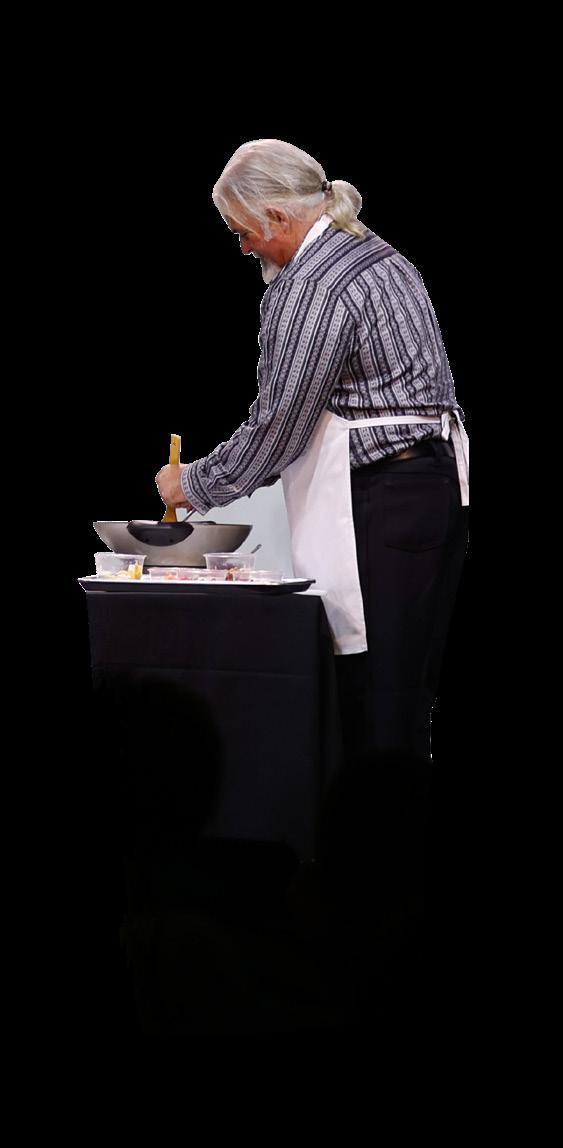
GUEST SPEAKER MARCI ROSSELL

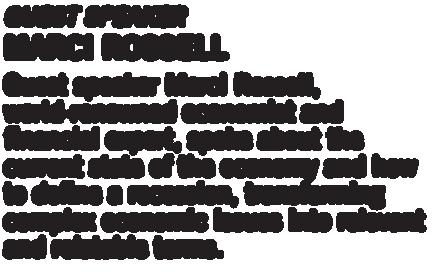
Guest speaker Marci Rossell, world-renowned economist and financial expert, spoke about the current state of the economy and how to define a recession, transforming complex economic issues into relevant and relatable terms.

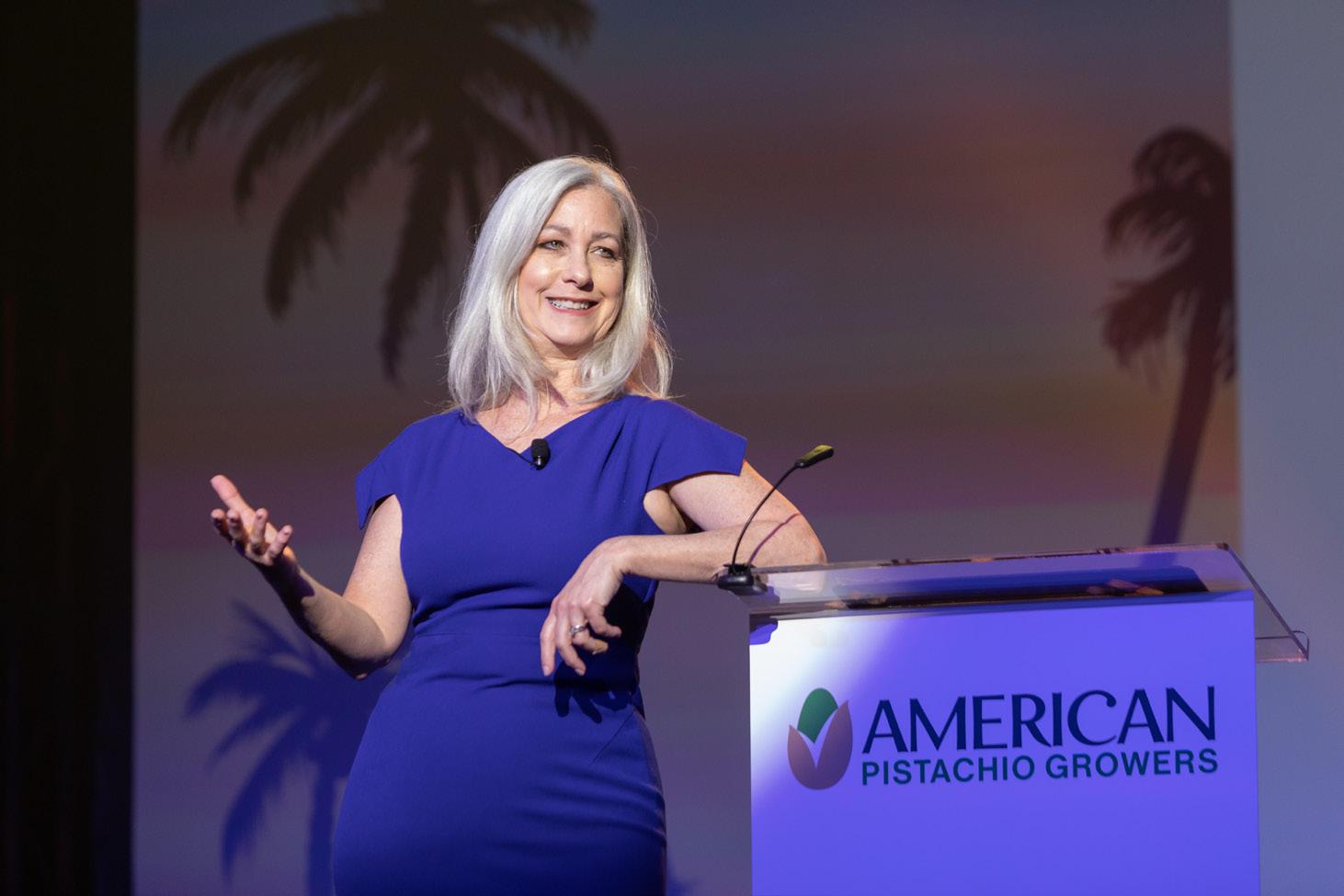

KEYNOTE SPEAKER DAYMOND JOHN
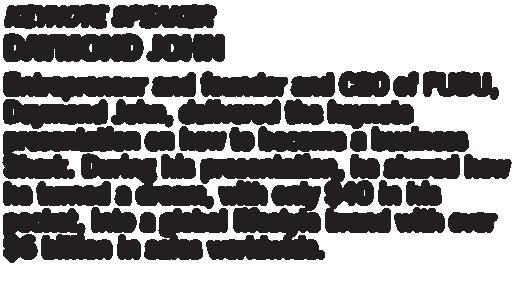
Entrepreneur and founder and CEO of FUBU, Daymond John, delivered the keynote presentation on how to become a business Shark. During his presentation, he shared how he turned a dream, with only $40 in his pocket, into a global lifestyle brand with over $6 billion in sales worldwide.




BOB SCHRAMM RETIREMENT TRIBUTE
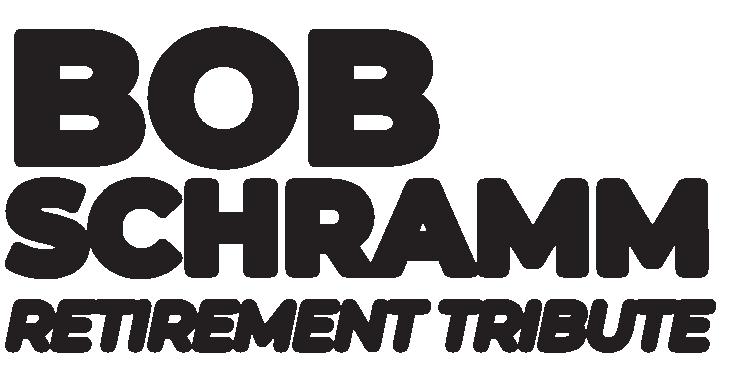

APG President, Richard Matoian, and Director of Government Relations, Cadee Condit, honored Bob Schramm and for his wisdom, knowledge and dedication to the pistachio
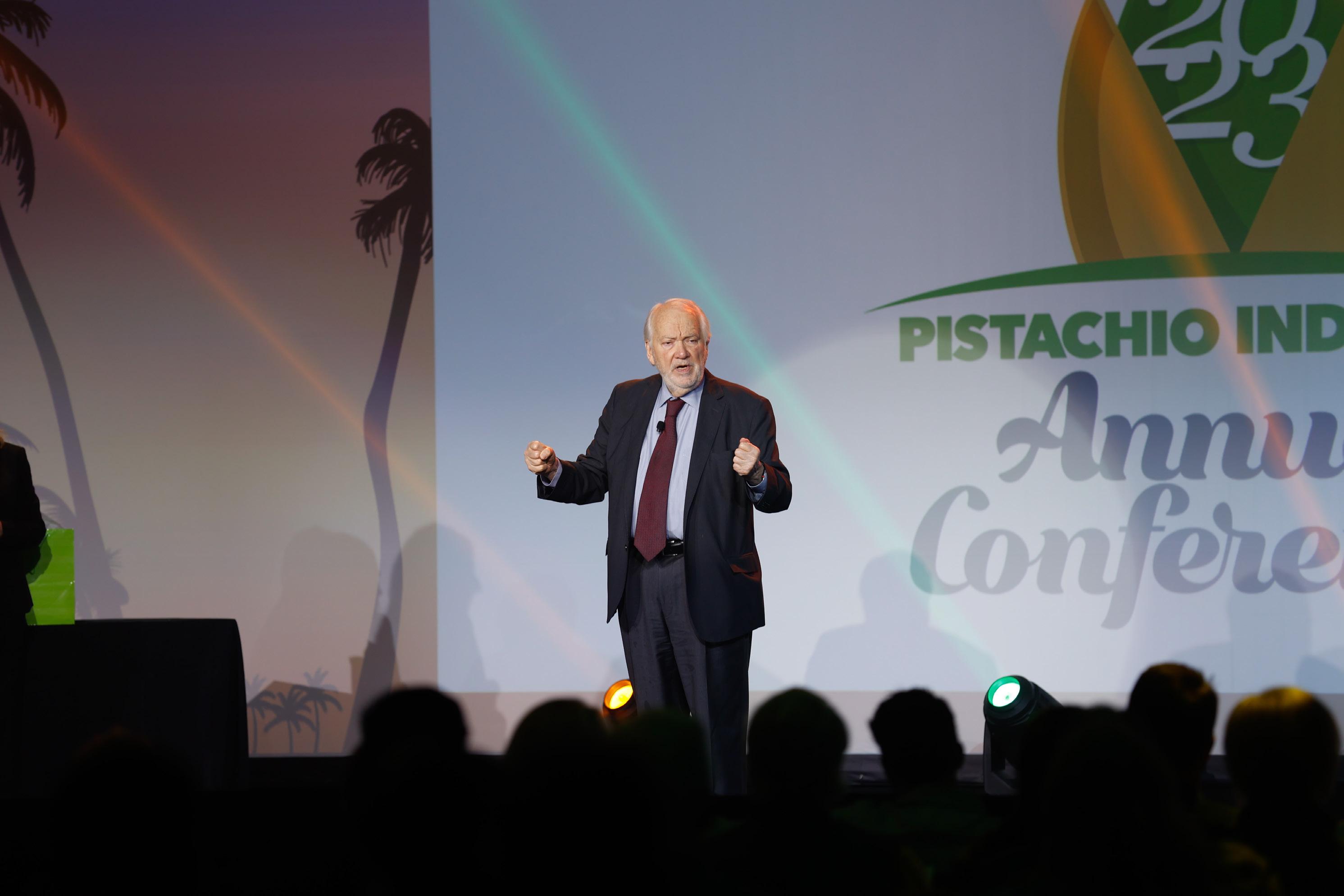
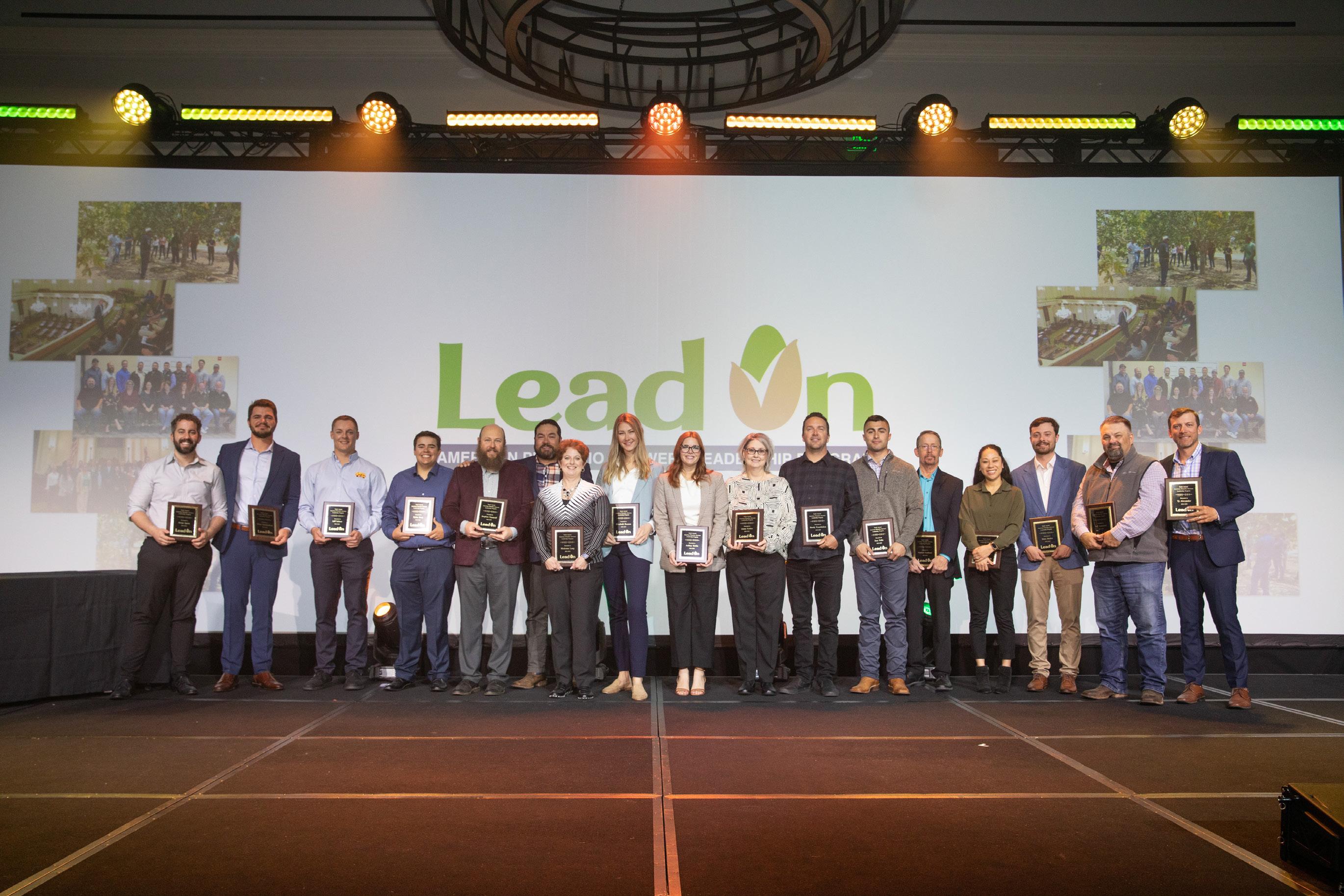
2023 LeadOn Congratulations to the 2023 graduates of APG’s leadership program, LeadOn, a year-long program that educates and motivates the next generation of leaders in our industry. CLICK HERE TO WATCH A TRIBUTE TO BOB SCHRAMM
From left to right: Brian Spain, Blake Schmiederer, Je Janna Forbes, Brody Feuerhaken, Jose Felix, Nathen
Government and thanked him pistachio industry.



LeadOn Graduates
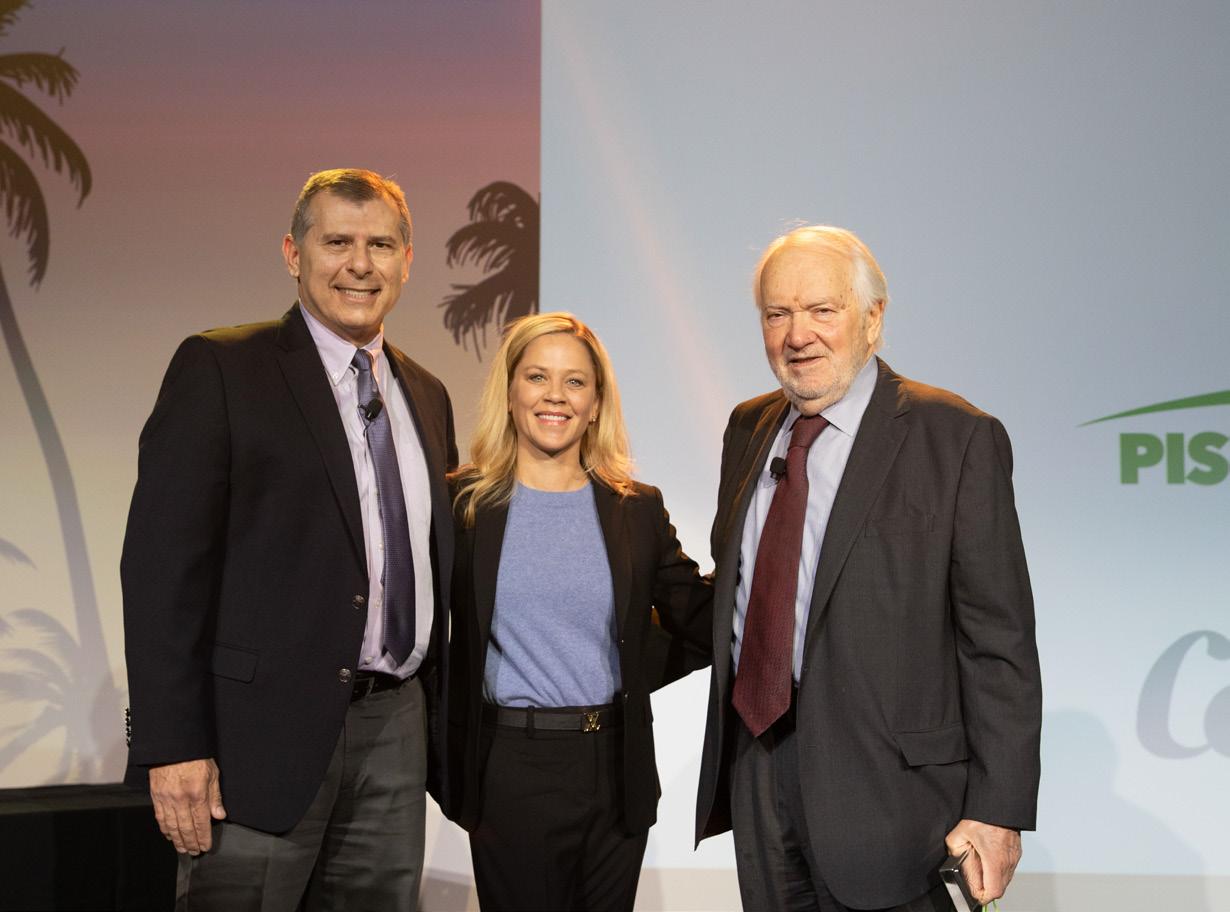

SCHRAMM TRIBUTE
SCHRAMM
Je Scheer, Dylan Rose, Stephen Nazaro , Doenitz Lopez, Madonna Lang, Elizabeth Keenan, Nathen Faulkner, Victoria Bisbee, Hans Beeler, Je Anderson, Ty Alexander
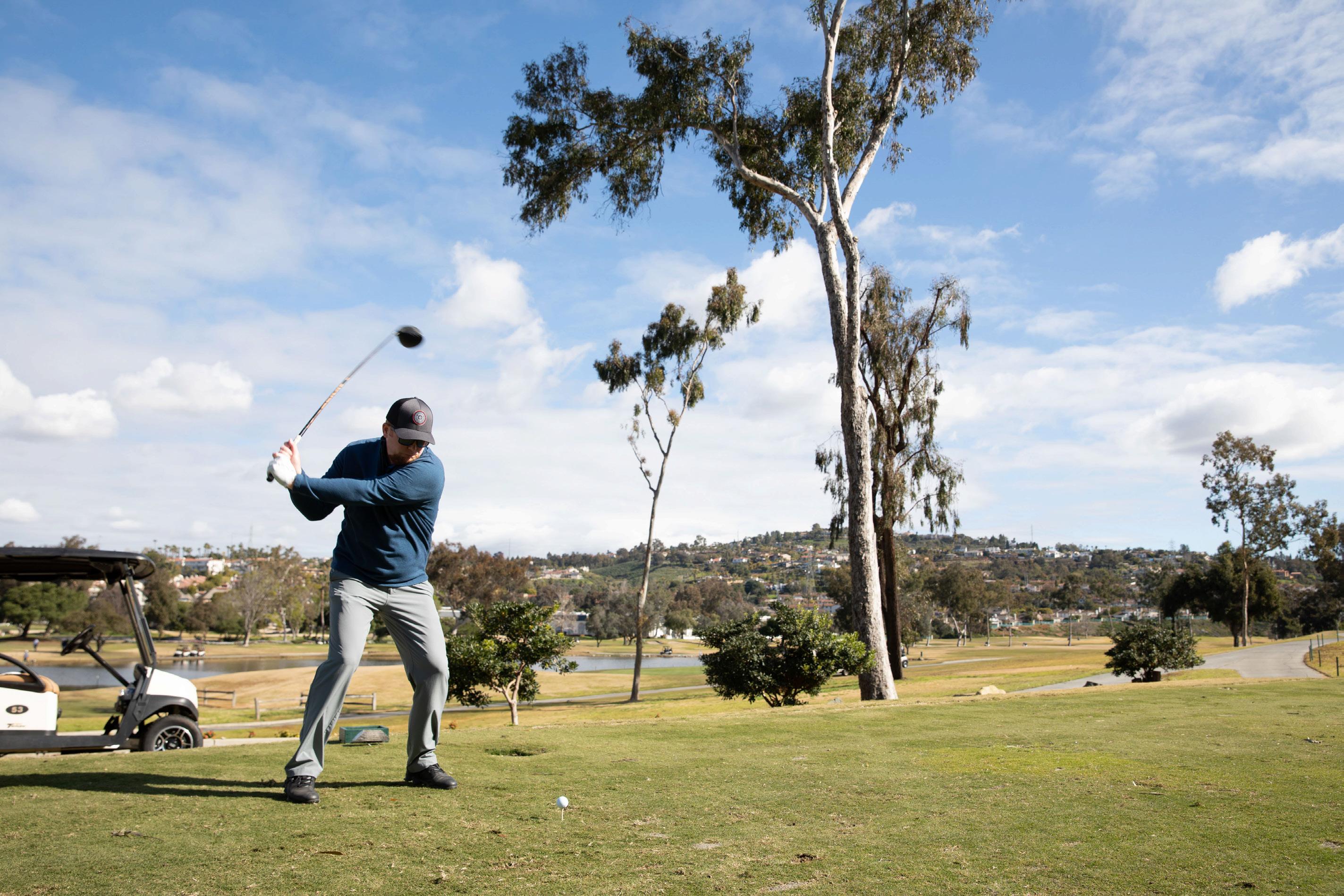



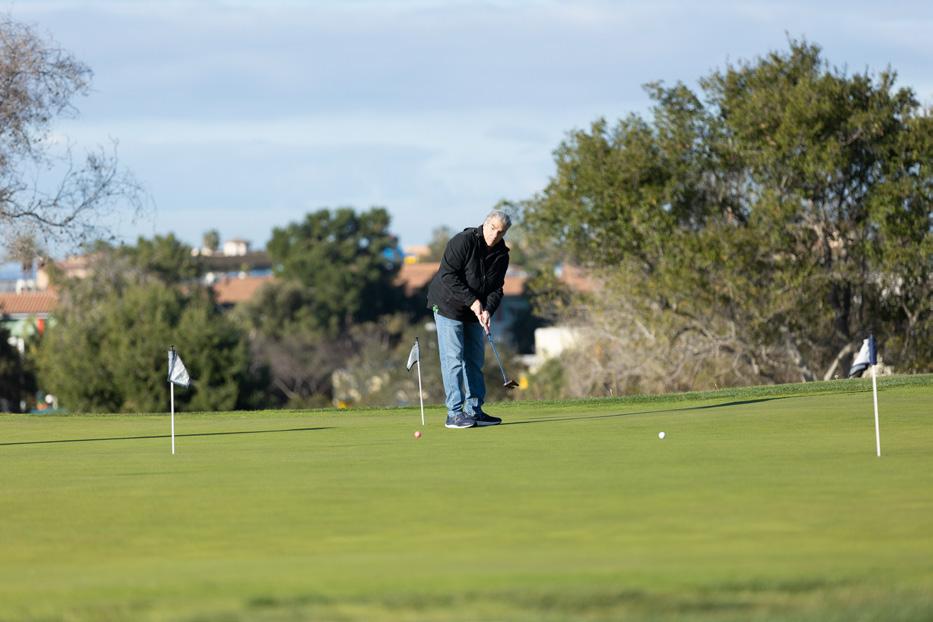













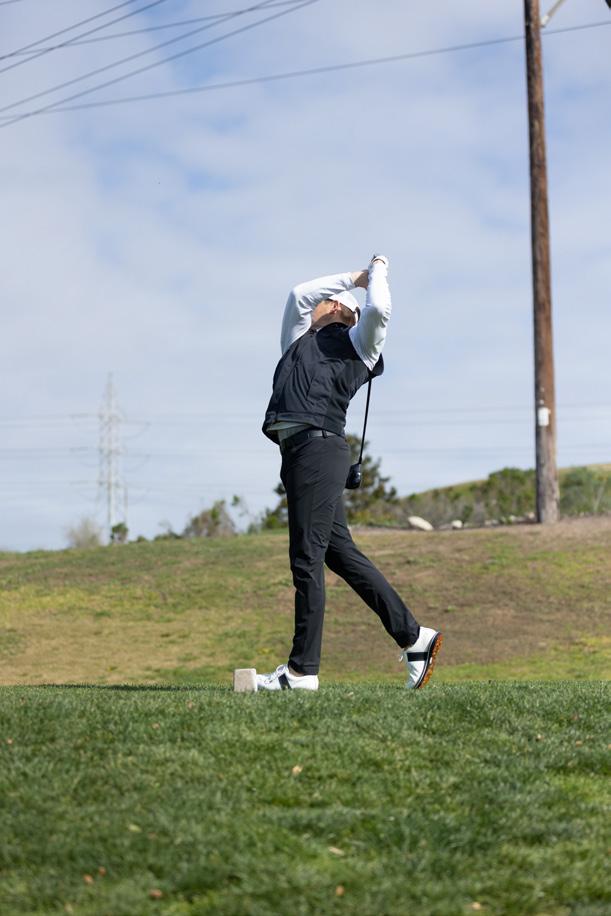









Surf’s Up, Sun’s Down Closing Party
It was the pistachio industry’s biggest celebration of the year. Surrounded by beach balls and country line dancers, APG guests celebrated the end of another successful pistachio industry conference. As the sun set on the 2023 Pistachio Industry Annual Conference, guests, dressed in their cowboy hats and flip flops, danced the night away with the moon and the sand and a drink in their hand.









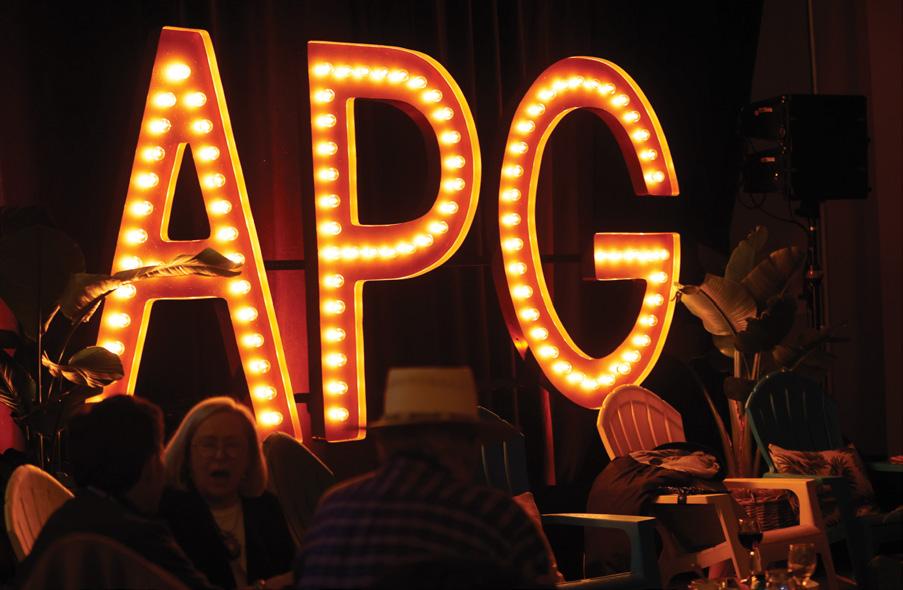




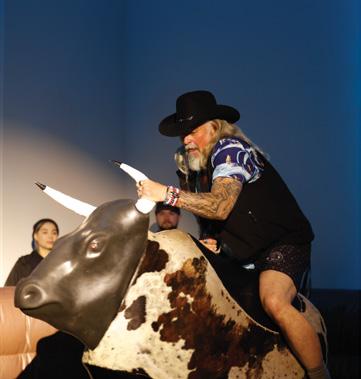






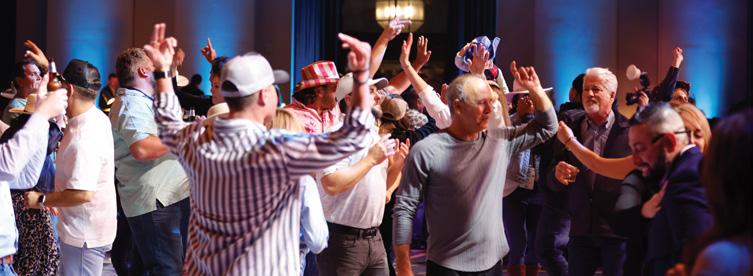


Pistachio-Inspired Recipes
by APG Ambassador & Celebrity Chef Martin








Five-Flavored





Long-Life Noodles

CLICK HERE TO SEE RECIPE
Kung Pao Chicken with American Pistachios
CLICK HERE TO SEE RECIPE
Curried Angus Beef in a Golden Cup
Chef
CLICK HERE TO SEE RECIPE
CLICK HERE TO SEE RECIPE
Creamy
with Happy Seafood in a Lettuce Cup
Chef Yan’s Favorite Paella


NEW




Pistachio-Inspired Dish from The Elbow Room Bar & Grill In Fresno
Creamy Carrot Ginger Soup with American Pistachios
Pistachio-Crusted Chicken
Milanese by Chef De
Cuisine Eric Rodriguez at the Elbow Room Bar & Grill

The Elbow Room Bar & Grill in Fresno has a new pistachio-inspired recipe on their menu. The new dish features pistachio-crusted chicken Milanese with whole grain mustard, pistachio-marinated chicken breast and panko-crusted, served over pistachio pesto and drizzled with balsamic reduction and topped with an arugula, sundried tomato, Pecorino and pistachio vinaigrette salad. Visit the Elbow Room Bar & Grill to try this delicious new pistachio dish.
CLICK HERE TO SEE RECIPE


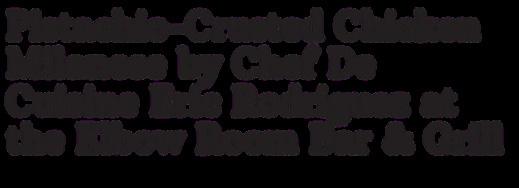
Recipes
Martin Yan
CLICK HERE TO SEE RECIPE
CLICK HERE TO SEE RECIPE


















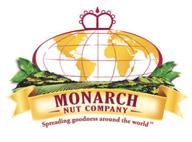



MONTEREY CONFERENCE CENTER, MONTEREY, CALIFORNIA

Pistach io I nd ustry

FEBRUARY 26-28, 2024
MONDAY-WEDNESDAY
REGISTRATION
OPENS FALL 2023

2024
An n ual Conference
Orchard Tips from Orchard Tips from






























WOW! Not even the big-frame computer models, space satellites, or our Nation’s finest meteorologists predicted that California would be catapulted out of EXTREME DROUGHT and into multiple flash flood warnings from repeated Atmospheric Rivers this winter! Even with the collapsing roofs, flash floods, snow-imprisoned households, and mud-filled highways, it’s hard to believe that the National Drought Mitigation Center as of Tuesday, March 7, 2023 (see droughtmonitor.unl.edu)



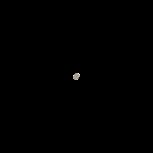

STILL claims 43.06% of the state remains categorized as being in moderate-to-severe drought! THAT is how DRY California had become! In October of 2022, NOAA predicted the Pacific Northwest would experience wetter-than-average conditions, with drier-than-average conditions for California, the southwest, the southern Rockies, and the southern Plains. What would we have done if that proved true? I guess the winter weather’s prediction, the “Omniscient Man’s” theory, got shot in the foot! I certainly have a compassionate heart for those suffering tragedies ranging from major home damage to the loss of life itself. I know many reading this may be groaning, “enough is enough,” however, how much of the water damage suffered was manifested by poor management of the forest floors and the absence of new and reinforced water basins and levees to take advantage of this unique winter? The destructive flooding of farmworkers’ homes in Planada might have been averted if the pleas of local resident, Skip Johnson, who asked to repair a washed-out area of Bear Creek 6 years ago, had been addressed (Merced County Times, January 19, 2023, 4 days after the levee break). The 2030 Merced County General Plan (see Flood Management, pages 13-9 and 13-10) also discusses enlargement of the Bear Creek Reservoir plus 33 miles of channel improvement which await a new analysis for environmental compliance. Maybe we should insist that Sacramento invest more in our outdated water management infrastructure instead of shaking our fist at the heavens!
HOLD THE WATER! With this tremendous rainfall and levees broken all over our farmlands, the immediate concern is saturated orchard soils and their effect on pistachio roots. It’s no secret that pistachio rootstocks do not fare well under low oxygen conditions. Unfortunately, we have not quantified the effect of oxygen deficits and their duration on pistachio root health. We do know that as long as the weather stays cool, time is on our side for the soil to drain sufficiently to re-oxygenate before bud break. Obviously, uniform, lighter textured soils drain and recover much faster than clay-loam soils, especially those dominated by sodium, which

Orchard Tips from Bob Beede









deflocculates (disperses) the soil particles, reduces the pore space between them, and further reduces downward water movement. Review of average soil temperatures at six inches at several CIMIS stations (cimis.water.ca.gov) shows the shallow soil depths ranging from 50-54°F. Concern for saturated soil is greatest as we approach bud break. Using isotopically labeled nitrogen, UC researchers Rosecrance, Weinbaum, and Brown (see Tree Physiology 16, pp 949-956) found that pistachios in their on-year took up twice as much N during the spring root flush between March 17 and May 24 than the off-year. Root studies on deciduous trees show initial growth at soil temperatures about 58°F; peak root growth is about 70°F...Based on this data, readers can see that by the week of March 19, orchards with saturated soil throughout their root profiles could be at risk for root damage from low oxygen. Again, all this depends upon daytime temperature, soil drainage and continued rainfall. It is years like this that support laser-leveling orchards with heavy soil texture prior to planting, even with drip irrigation, to allow rainwater to migrate to one end of the field where it might be pumped off. It is highly recommended that growers with standing water do what they can to mitigate it. Doing so reduces the amount that must infiltrate into an already saturated soil; it also increases the rate at which surface soil oxygen levels recover. Growers with excessively wet soil should monitor the emerging bloom and foliage for signs of yellowing, an indicator of low soil oxygen. This can result in bloom shattering off the tree from organic chemicals produced in the roots and translocated up the vascular system to emerging flowers and leaves. I’m not predicting gloom and doom, but merely trying to explain what might happen in some orchards if the storms continue into April. Even in well-drained soil, growers may not need to irrigate before mid-to-late May, depending upon spring temperatures. The pistachio water requirement in non-saline soil is less than 1.5 inches for the entire month of April! Thus, a 4-foot root zone at field capacity with almost 6 inches of available water provides plenty of water until mid-May. Those needing to apply nitrogen during April should keep the applied water to a minimum. Orchards with high-silt surface soil and an absence of vegetation in the middles may benefit from spring-toothing as soon as practical to break up the crust and assist in aeration
Monitor Bud Break and Bloom: Expect to see a sharper and shorter bloom period this spring in both Golden Hills and Kerman, providing we experience favorable weather from late-March to mid-April. This will reflect the fact that the rest (chilling) requirement of all pistachio cultivars was fully satisfied this winter in most regions. Visual signs of rest satisfaction are Peters developing ahead of Kerman, and the south side of east/west planted orchards developing faster than the north side. Research shows the male Peters have a higher chilling requirement than Kerman. Thus, when its rest requirement is fully satisfied, it can develop before the Kerman female tree. Complete rest satisfaction also results in the south side of east/west planted trees pushing before or simultaneously with the north because the south side receives less chill in warm winters due to the sun rising and falling 29°F south of east (griffithobservatory.org). With marginal chilling, the north side of the tree pushes sooner because it is not as affected by the warmer winter temperatures due to its orientation to sunlight. Cold and rainy weather will slow tree development due to lower heat units. Be sure to make some notes about the dates at which bud break, early, mid and late bloom occur. This tells you how strung-out fruit set is, and to what degree, if any, you were affected by inclement spring weather. This information also gives you some indication of how strung-out harvest maturity might be. If you installed the weather station I sent you for Christmas, make a file on your computer for temperature data occurring during bloom and early fruit set. This will aid you

Orchard Tips from Bob Beede



















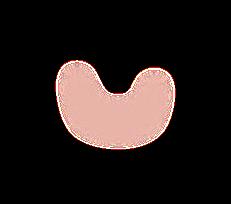


in evaluating unexpected events during this most critical phase of orchard production. High and low temperatures are particularly concerning because they can affect the rate of germ tube growth of the pollen grain, and subsequent fertilization. I would be very grateful to growers who treated with Dormex or oil to share their leafing, bloom, fruit set observations with me compared to untreated trees. We need more field observations from Dormex-treated orchards to understand its efficacy.
Disease Watch: If it rains a quarter inch or more during bloom, it a fungicide to control Botrytis and reduce Botryosphaeria (BOT) is a HOT weather disease! It will NOT show up during bloom and fruit set! Wilting shoots in early April are Botrytis, not BOT. The potential for these diseases depends upon past infection levels and repeated rain events. Dr. Themis Michailides has determined 0.2 inches of rain and temperatures at or above 55°F constitutes a Botryosphaeria infection event. Your BOT inoculum pressure can still be assessed by examining the base of old cluster rachises for blackened tissue, which extends into the 1-year-old wood, and looks like verticillium streaking from where the cluster attached to the branch. Infected old clusters also tend not to break cleanly from the shoot. Instead, they leave a stub when one attempts to knock them off. Also examine older wood for sunken areas, which, when cut into, have blackened tissue running lengthwise in the limb. These represent old infections, which can possess active pycnidia for up to 6 years. By the time you read this it will probably be too late to conduct the BUDMON sampling described last month. However, be on the lookout for flower buds that do not push. Collect and cut them in half to see if they are BLACK internally NOT brown from natural death. Remember, Botryosphaeria is primarily treated in mid-June and July in orchards with low to moderate inoculum levels. BOT symptoms also develop in the hot summer, NOT cool spring! Shoot wilting and collapse in the early spring is very likely Botrytis. And YES, I DO know I just stated that above, because this distinguishing symptom is routinely missed! Bloom fungicide applications for these two diseases are normally not justified in the southern San Joaquin Valley, because the inoculum levels are not great enough. Obviously, there are orchards with historical disease pressure that warrants bloom treatment. The value of bloom treatments this spring is driven entirely by historical disease pressure and persistent wet weather!
Nitrogen: Avoid heavy nitrogen applications before fruit set. Remember that early shoot growth and fruit development is all from STORED NITROGEN! A good nitrogen management program includes soil, plant, and irrigation water N assessment. This means you should have samples taken of each, so you can make a better assessment as to how much synthetic N needs to be applied to the soil to meet the plant/crop requirement. Some growers/consultants favor N application shortly after bud break and support this early timing with the accurate statement that it takes about 14 days for ammonia-based fertilizers to convert to nitrate for uptake. Hence, they want the nitrate conversion completed by the time there is sufficient leaf area for its uptake by transpiration. In my opinion, this practice assumes there is inadequate nitrogen stored in the tree and the soil to meet the growth potential of the tree. Based upon UC nitrogen research, the pistachio tree’s ENTIRE seasonal N requirement for growth and development is only about 25 pounds. The bulk of the N requirement is associated with crop development. Thus, the nitrogen status of the tree, soil, and irrigation water would have to be quite low to require N application at bud break. That said there are orchards that respond to early fertilization! Back off on the N applied this season if you find soil nitrate nitrogen levels above 35 ppm per foot in the root zone.





Orchard Tips from Bob Beede

















Nitrate nitrogen levels in the irrigation water must also be considered in your budget. A 10 ppm nitrate N level supplies 27 pounds of actual N per acre foot of water applied. Nitrogen applied to rain-soaked soil also greatly increases loss from denitrification, particularly in heavy textured soil.







Micronutrient Sprays: 50% leaf expansion (late April) is THE OPTIMAL time for zinc uptake! Use only 2 pounds of zinc sulfate 36% or the zinc product of your choice. Research by Patrick Brown and Qinglong Zhang indicates it is safe to add a half pound of Copper EDTA or 1 pound of Solubor to the foliar zinc sulfate rate. Buffering this mixture to a pH of about 5 also improves zinc uptake by increasing the amount in solution. Acidification should be done with citric acid (powder) rather than phosphoric buffer to prevent zinc phosphate precipitation. Many growers prefer to avoid the powders and apply liquid materials formulated for pistachios. Check with your supplier for suggestions, but be sure they have adequate amounts of copper, boron, and zinc. This is especially true of 2- and 3-year-old trees. Deficiencies severely limit canopy development and reduce early bearing potential. My experiences suggest second leaf orchards are especially susceptible to micronutrient deficiency, partly because of all the tipping performed to create branching. 3 sprays are often needed to prevent loss of canopy development during this critical training year.

Shriveling Flower Clusters do not necessarily indicate fungal infection. Clusters that remain green and shatter off the tree could be associated with low boron levels. Boron deficient leaves have crinkled edges but remain uniformly green and normal in size. Tissue levels less than 60 ppm in May suggests the need for boron fertilization. Boron is taken up by the leaves throughout the season, so application can be made at any time during the spring. Correcting severe deficiencies may require up to 2 ounces of Solubor PER TREE (16 lb/ac) soil applied over time! Depending upon the severity of deficiency, start with ½ to 1-ounce of Solubor equivalent per tree, and then assess the soil and tissue levels after 3 months. Apply more in ½ ounce increments to avoid excessive boron in the soil. Boron is phloem immobile, so it does not readily translocate up into the tissues of greatest need. This is why you have to go slow to avoid problems.






Pest Management: It is time to get out the beating tray and monitor for small plant bugs, which are the most common cause of epicarp lesion shortly after fruit set. Go to the UCIPM Pistachio website and study up on all the small plant bugs that can cause damage. Research shows that 20% or more lesion to the clusters can be compensated for by nuts setting that would have otherwise fallen off. Typically, out of 150 flowers per female inflorescence, only about 10% actually set. Work with a pest control advisor knowledgeable about pistachios to determine how much damage you can tolerate. Most growers do not want to see ANY epicarp lesion, so they apply a prophylactic pyrethroid spray shortly after fruit set to put their mind at ease. I hope I live long enough to witness us getting off the pyrethroid treadmill with softer, equally effective new insecticide chemistry! What a HUGE impact that would have on a more balanced orchard insect ecology!




Happy Farming!

@PistachioPower
AmericanPistachios.org
9 River Park Place East, Suite 410 Fresno, CA 93720 USA
Telephone: (001) 559.475.0435

Facsimile: (001) 559.475.0624
www.AmericanPistachios.org

PistachioPower





















 Relations, and Judy Hirigoyen introduced a California legislative campaign designed to target California’s decision makers.
Judy Hirigoyen and APG Board Member, KARUN SAMRAN, announced a new ad hoc committee dedicated to sustainability.
Relations, and Judy Hirigoyen introduced a California legislative campaign designed to target California’s decision makers.
Judy Hirigoyen and APG Board Member, KARUN SAMRAN, announced a new ad hoc committee dedicated to sustainability.









































































































































































